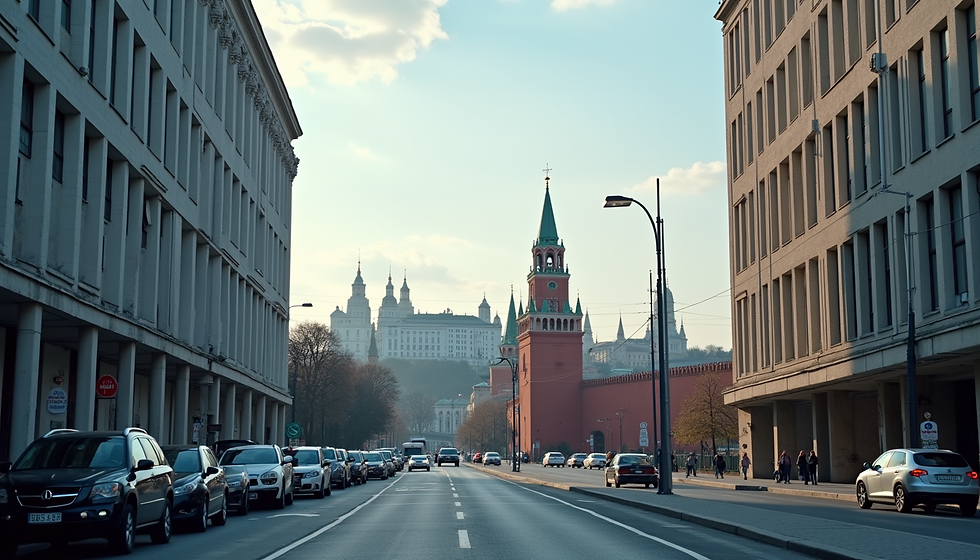Analyzing the Impact of Marketing and Advertising on the Delhi Election 2025 Results: A thought-provoking editorial perspective
- Harshit Srivastava
- Feb 9
- 3 min read
Introduction to Delhi Elections
The Delhi Assembly Elections 2025 marked a significant political shift, with the Bharatiya Janata Party (BJP) securing a decisive victory after nearly three decades. While governance and public sentiment played key roles, a well-executed marketing and advertising strategy significantly influenced the outcome.
This article analyzes the marketing strategies, advertising expenditures, digital campaigns, and AI-driven election tactics that shaped the Delhi Elections 2025 results. It also examines key lessons for future political campaigns.

The Shift to Digital Advertising in Delhi Elections 2025
Political advertising in India has evolved dramatically, with digital marketing surpassing traditional election campaigning. Over ₹500 crore was reportedly spent on social media, digital ads, and influencer marketing, making this the most digitally driven Delhi election to date.
Key Digital Marketing Strategies Used
Targeted Facebook and Google Ads: AI-driven campaigns ensured that each voter received highly personalized political messaging.
Influencer Marketing and WhatsApp Groups: Political parties collaborated with regional influencers, YouTubers, and WhatsApp groups to amplify their messages.
Micro-Targeting via AI and Big Data: BJP leveraged predictive analytics to focus on specific demographics, age groups, and undecided voters.
Why This Matters
BJP led the digital ad spending race, ensuring maximum visibility across platforms such as YouTube, Instagram, Facebook, and Twitter (X).
AAP did not fully capitalize on digital micro-targeting, leading to reduced engagement with younger voters and middle-class professionals.
BJP’s AI-Driven Campaign Strategy: The Game Changer
One of the biggest differentiators in the Delhi Elections 2025 was BJP's AI-powered election strategy. The use of machine learning algorithms helped analyze voter sentiment, behavioral data, and social media trends to:
Identify swing voters and undecided electorates, ensuring they received highly personalized content.
Create emotion-driven advertising campaigns that addressed local Delhi issues effectively.
Optimize Google Ads and Meta Ads in real time to maximize engagement and return on investment.
Impact of AI on BJP’s Campaign
Increased voter engagement by 40 percent through custom video advertisements.
Dominated social media conversations on Twitter and LinkedIn through targeted hashtags.
Influenced undecided voters with retargeting campaigns that adjusted in real time based on online interactions.
Sentiment analysis tools were also used to counter negative public relations and opposition attacks, allowing BJP to quickly adjust its messaging and maintain a strong narrative throughout the campaign.
AAP’s Marketing Strategy: What Went Wrong?
Aam Aadmi Party (AAP) had previously succeeded with ground-level campaigns and direct engagement tactics. However, in the 2025 elections, several key missteps impacted its performance.
Key Challenges Faced by AAP
Lack of Political Alliances: AAP did not form strong coalitions, leading to a fragmented opposition vote.
Limited Social Media Engagement: While AAP relied heavily on its past reputation, it did not invest enough in aggressive digital advertising compared to BJP.
Ineffective Response to Negative Publicity: The party faced criticism on multiple issues but did not effectively counter them through strategic messaging.
Voter Base Erosion: A significant portion of the urban middle-class electorate shifted towards BJP, influenced by targeted digital campaigns.
Role of Traditional Media and Regional Advertising
Despite the dominance of digital platforms, traditional media still played a critical role in shaping voter perceptions. BJP effectively used television and print media to communicate key promises, such as free electricity, infrastructure development, and financial support initiatives. This strategy helped BJP strengthen its outreach among older demographics and non-digital voters.
On the other hand, AAP’s advertising on traditional media was relatively limited, which reduced its ability to reach a broader audience beyond its core voter base.
Conclusion
The Delhi Elections 2025 demonstrated the growing influence of digital marketing, data analytics, and AI-driven advertising in political campaigns. BJP’s well-coordinated strategy, backed by digital dominance and sentiment-driven messaging, played a crucial role in securing voter confidence.
AAP’s underutilization of digital resources, combined with strategic missteps, contributed to its electoral decline. This election serves as a case study on the importance of adaptive campaign strategies, real-time audience engagement, and data-driven decision-making in modern political marketing.
As political campaigns continue to evolve, leveraging technology, digital platforms, and innovative outreach methods will remain essential for electoral success.
Whats your expectation form the new government?
Pollution Control
Socio Economic Development
Ease of Doing Business
Increase safety in State




Comments